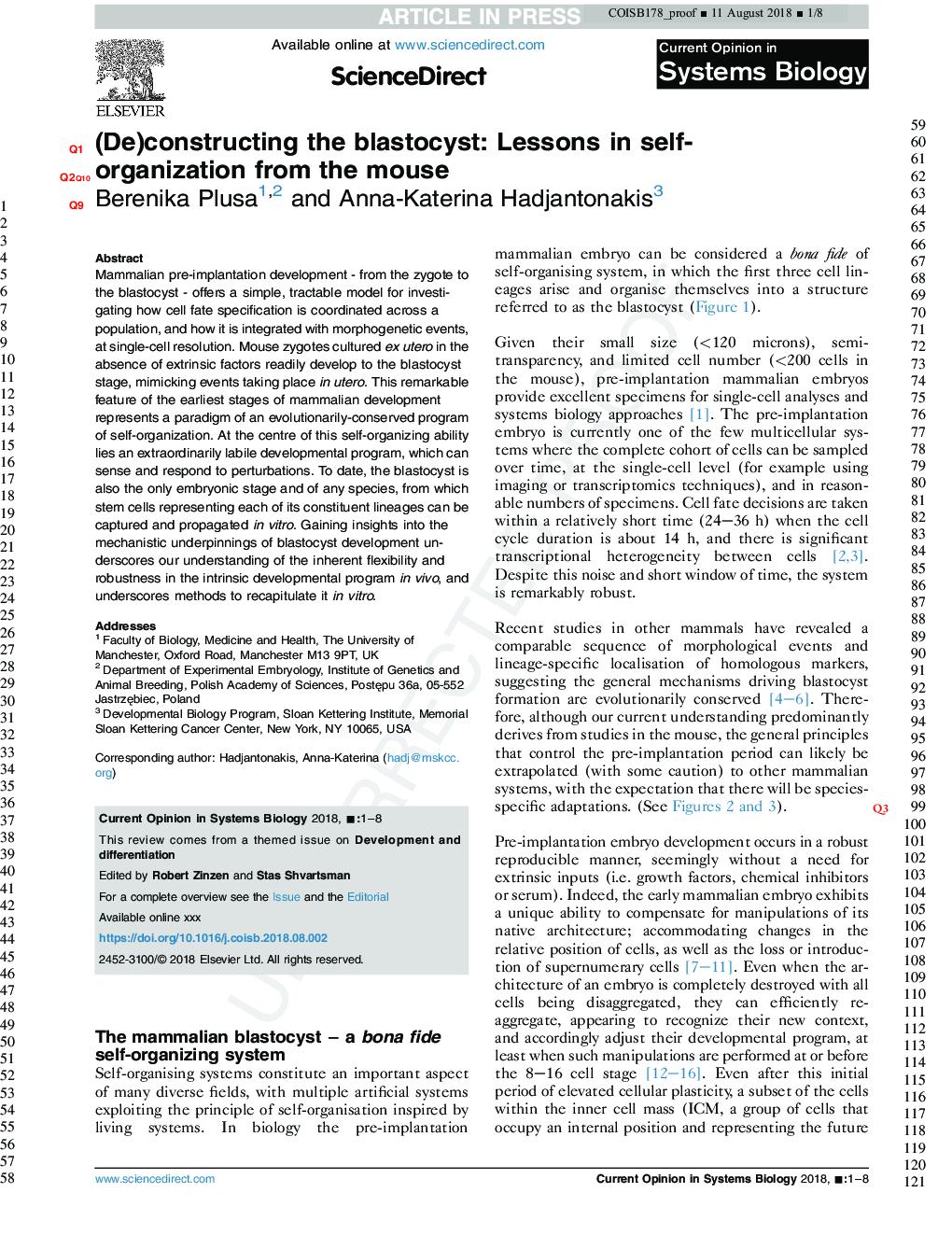| Article ID | Journal | Published Year | Pages | File Type |
|---|---|---|---|---|
| 11033015 | Current Opinion in Systems Biology | 2018 | 8 Pages |
Abstract
Mammalian pre-implantation development - from the zygote to the blastocyst - offers a simple, tractable model for investigating how cell fate specification is coordinated across a population, and how it is integrated with morphogenetic events, at single-cell resolution. Mouse zygotes cultured ex utero in the absence of extrinsic factors readily develop to the blastocyst stage, mimicking events taking place in utero. This remarkable feature of the earliest stages of mammalian development represents a paradigm of an evolutionarily-conserved program of self-organization. At the centre of this self-organizing ability lies an extraordinarily labile developmental program, which can sense and respond to perturbations. To date, the blastocyst is also the only embryonic stage and of any species, from which stem cells representing each of its constituent lineages can be captured and propagated in vitro. Gaining insights into the mechanistic underpinnings of blastocyst development underscores our understanding of the inherent flexibility and robustness in the intrinsic developmental program in vivo, and underscores methods to recapitulate it in vitro.
Keywords
Related Topics
Physical Sciences and Engineering
Computer Science
Computer Science (General)
Authors
Berenika Plusa, Anna-Katerina Hadjantonakis,
